The Chobe National Park is one of the most iconic nature parks in Africa. With an area of more than 10,000 km2, it is one of the places in the world with the largest population of elephants (around 120,000 specimens) and where you can have the opportunity to see the big five.
The Chobe Natural Park can be divided into 4 very different areas that allow us to visualize various types of fauna and landscapes:
– The area of Serondela to the north, where we find the Chobe River which gives its name to the park and which is the natural border with Namibia and Zambia. Due to the presence of water, this area is wetter and allows for greater vegetation and concentration of animals that approach the shore to feed and drink water. Kasane is the starting point for visiting the north of the park. Here you can visit by 4×4 to see lions, buffaloes, elephants, giraffes and many more animals following the course of the river and also a boat cruise from Kasane to see crocodiles, hippos and other animals resting near the shore like buffaloes, baboons and elephants.
– The Linyanti area at the river end west of the park. This is a swampy area along the Chobe River that is less crowded with tourists but has a lot of wildlife; and less accessible to get there.
– The Savuti area is located south of the Chobe Natural Park. Unlike the north, here the terrain is dry and with a lot of sand. It is a more open area, with large plains and ponds where many predators can be seen, including lions, cheetahs and elephants. The sandy roads are totally an adventure in driving your 4×4.
– The Nogatsaa/Tchinga area, located between Linyanti and Savuti, is located in a higher, drier area which makes it the least spectacular in the park. You can find elands and a lot of mopans in terms of vegetation.
The vast expanse of the park, the diversity of landscapes we find there, the large presence of animals and the Chobe River make this natural park a must to visit during your trip to Botswana, and one of the most spectacular safaris you can find. in Africa.

What to consider before visiting the Chobe?
– To access the Chobe by land, it is essential to travel by 4×4. It is a mandatory requirement for all access entrance gates because in many areas we will find a lot of sand on the ground. For those who don’t have one, one option is to hire a 4×4 safari in Kasane (4-hour, half-day or full-day route options) to visit the Serondela area.

– The northern part of the Chobe can also be visited with a river cruise. Many agencies offer an afternoon tour with the sunset to sail into the river and see hippos, crocodiles, buffalo, antelopes and elephants. This is a must experience. The routes are usually from 3pm / 4pm to 7pm. We advise you to go to the river bank in Kasane to book the tour (you can also do this in your accommodation in Kasane) and arrive in advance of the scheduled departure time. It is a complement to the safari by land, as you can see the wildlife and the landscape from another perspective.

– Another excursion you can book in Kasane is a day trip to Victoria Falls. We recommend that you book through your accommodation, as you will usually be picked up there by two people, one who will take you by taxi to the border point in Kazungula, and the other who will take your car to the part of Zimbabwe. to take you to Victoria Falls. The sooner you leave, the less queue you will have to make at the border point so take the opportunity to be one of the first to cross the country! If you want to know our experience, click here.

– If you want to cross the Chobe, plan ahead where you will be staying. There are plenty of accommodation options for all budgets in Kasane, but if you want to cross the park from north to south book the campsites in advance as there is very little places on offer. In addition, in the summer the places fill up very quickly. We were lucky enough to take place at Savuti Camp, but instead we did not find it in Linyanti. Savuti and Linyanti camps must be booked through SKL Camps. In addition, you will find other private accommodation such as Thobolo’s Lodge (where we stayed) or Muchenje River.

– Adapt to the schedule of the hens. At dawn, when the sun rises and sets, it is when the animals are most active and it is easier to see them. Get up early and get out with the car at sunrise and you may see some nocturnal animals that are still active. You can rest at noon, when it’s hotter, as that’s when it’s harder to see animals. In the evening, after a siesta, many animals are back active to go drink water for the last time and the nocturnal animals start coming out again.
– Check your tire pressure and get ready for driving challenges. Think that the ground is full of sand and you will most likely get stuck if you don’t bring the right pressure. That’s why it’s important to follow these tips for driving in Botswana, especially when it comes to sand.
– Fill the full tank in Kasane. You won’t find a place to refuel all the way down the Chobe except Kasane, so it’s a good idea to get out of there with a full tank. If you come from the South area, fill the tank at Maun.
– Bring firewood in the car to make fire every day you sleep inside the park. In Botswana, the campsites are not fenced, so you can find animals near your camping area. If you make fire, you will keep the animals away. Think that at Savuti Camp we were recommended that if we had pee at night, we had better drive to the toilet!
– Prepare a menu of what you will eat in advance. If your base point is Kasane, there you will find numerous restaurant options and cooking option in your own accommodation; but if then, you want to cross the park from North to South (or vice versa), go shopping at a Kasane and Maun supermarket to take groceries with you for every day inside the Park as you won’t find any places to eat or buy there.
– Drive slowly. The Chobe is a park with a lot of animals. Take the opportunity to drive slower, so it’s easier to see animals and notice where they may be without scaring them with the noise of the car.

– Keep a safe distance between the animals and your vehicle. Please note that you cannot get out of the car under any circumstances unless it is a designated area. Also, if you find elephants keep a proper distance so you avoid any unexpected incidents. Pay attention to the signal that animals make you to respect their territory and habitat. If you want to know more about elephant behavior, click here.
– In areas enabled to get out of the car and eat, especially do not leave any trace of food nearby. Baboons are usually very attentive and closer than they seem and can sometimes be aggressive and steal your food. It happened to us: we stopped at a picnic area, and the moment we left the food on a table and turned to the car to look for cutlery, a group of baboons came to grab our food. And do you know what they tried to grab from the whole table? A jar of nutella!

– If you are going on a safari with your own vehicle, talk to the organized safari guides and follow them from time to time. Among them, they communicate through walkie-talkies about the areas where they have seen different animals and it is also a good way to be able to see wild scenes and find animals in specific places. However, in the Chobe and especially in Savuti, you will surely find lions without any “external help”.

When to visit this natural park? What to bring?
The best time to visit the Chobe is during the dry season, which runs from May to October. During this time, we will find many animals on the banks of the Chobe River and waterholes in search of water. The presence of animals becomes more noticeable as the dry season progresses, that is, between July and October, where the presence of animals is impressive. However, keep in mind that during these months the temperatures are the coldest of the year, where at night we can reach about 5-10º. Don’t forget that as it is the best time, it is also the most visited and therefore you will have to book in advance and you will find more tourists in the area.

During the rainy season (November to March / April), the animals disperse and it is more difficult to see them. In addition, the road that runs through the park becomes quite impassable. However, this time of year is ideal for bird watching, to see one of the largest migrations of zebras in Africa (especially in the Savuti plains) and to see the birth of new antelopes.
When packing, it is important to bring:
- Binoculars for seeing animals from afar.
- A hat and sunglasses.
- A good map of the park or the area. We always use the MAPS.ME application. At the front doors you can also ask for small maps with the routes indicated and follow your intuition to deviate from different paths to discover animals.
- For the car, it’s important to bring shovels, some rope, a compressor to check your tire pressure and sandtracks in case you get stuck in the sand. Sometimes you’ll find cars to help you get out, but sometimes it’s up to you to get the sand off the wheel to get out of there, so be prepared!
- The flashlight and the front light is essential because, during the night, there is no light in the campsites.
- Bring enough water for the whole day safari. You can also bring something to snack between hours. There are special picnic areas to eat inside the park, but be careful not to leave a trail of food.
- A good mosquito repellent and long protective clothing for nights or evenings.
- Sun cream and lip protector.
- Clothes are better if they are of light and bright colors. Preferably it should be khaki, dark green or brown. It should also be comfortable clothing that allows you to sit for many hours inside the car and at the same time, breathable. Remember that at sunrise and sunset, it starts to get cooler, take some warm clothes with you.
- When cruising in the evening, bring some warm clothes because with the current of water and the sunset, the temperatures drop and it gets colder.
- A good camera with the right lenses. Also remember the battery and the adaptable charger so you can charge them in the car while driving.
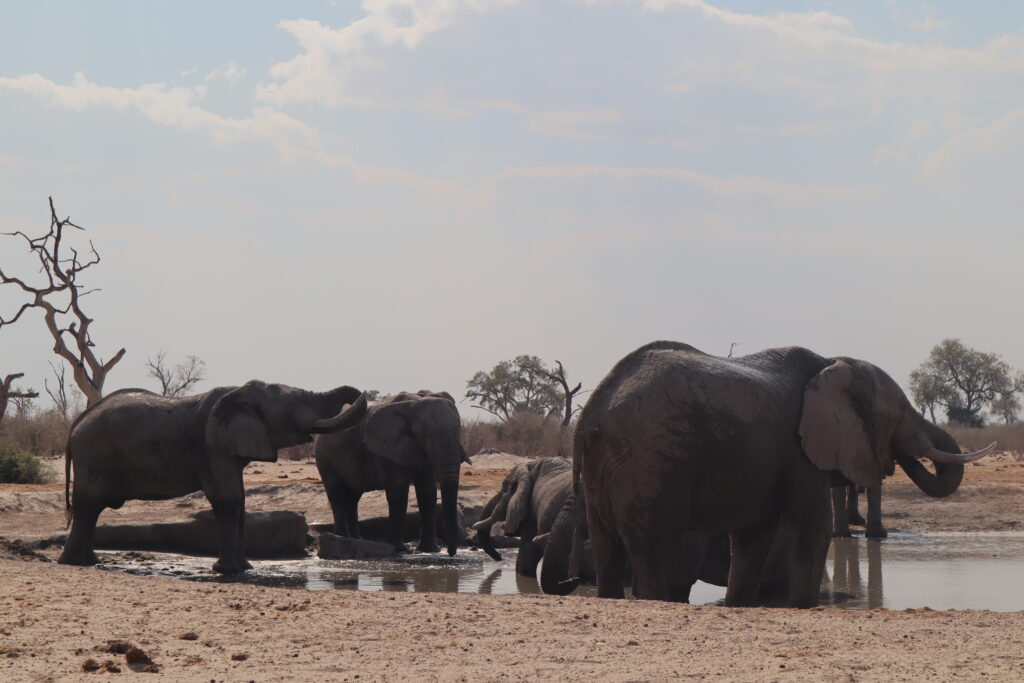
How to get there?
Kasane is the main city to visit this park. Located in the north of the country, it is the first stop you will make both if you access it from Caprivi (the Ngoma border is 1 hour away), and if you access it from Zimbabwe (the Kazungula border is next to Kasane).
Kasane is a town on the banks of the Chobe River where you can find different types of accommodation for all budgets, as well as supermarkets and petrol stations. From this city begin all the cruises that make a route by the Chobe river. If you want to drive along the river in Serondela area, you have to enter through the Sedudu Gate located at the entrance of the village and which gives access to Chobe National Park. You can get to Kasane by car on the Chobe Riverfront (the country’s main entrance road if you arrive from Namibia) or on the A33 which runs east of the country from Nata (both roads are paved and in good condition); but to enter the natural park it is essential to go with a 4×4.

If you want to access the Chobe from the south, the main entrance is Mababe which is about 3 hours from Maun. The Mababe Gate is the main gate to visit the Savuti Reserve.
Apart from that, we find other more inaccessible access doors to the Chobe such as the Poha Gate, located to the east of the park and which is the entrance to the Nogatsaa / Tchinga area; the Linyani Gate, in the western part of the park; or the Ghoha Gate which is the gateway north of Savuti.

Permits, reservations and prices
The price to visit the Chobe Park is 120 pulas per person per day plus 50 pulas per car and day. It is really very cheap and the minimum investment is well worth it. Think we are talking about 9 euros per day per person and 4 euros per car to visit one of the most impressive parks in South Africa! You will have to show your passport at the front door where you enter and write down your details and those of the vehicle, and there you can indicate the days you will be there and you will have to pay everything at once (at Sedudu Gate you can pay with credit card). They will give you a receipt that you will have to keep throughout your visit to the Chobe, even if you do the cruise because otherwise they will charge you again.
For the river crossing in Chobe, in Kasane you will find different options. We paid 200 pulas per person and did it by paying directly to the captain of one of the hotel boats that are located on the riverfront.
If you are traveling by car or without a car, you can also book a safari through the northern part of the Chobe from Kasane. Here you will find different options (4 hours, half day or full day) that you can surely book from your accommodation.
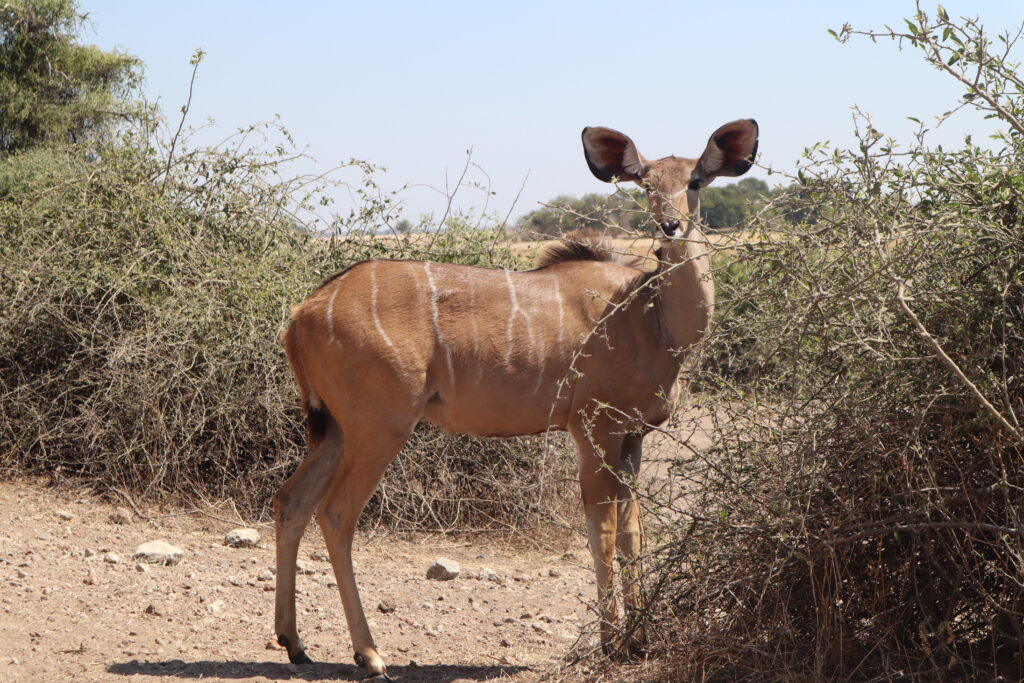
Where to sleep in Chobe?
Kasane, the main town in the northern part of the Chobe, offers a wide range of accommodation for all budgets. We can find luxury hotels on the riverfront such as the Chobe Safari Lodge, as well as hostels and campsites. We stayed 3 nights on the Elephant Trail, a hostel in the upper Kasane area. It has a kitchen for cooking, offers excursions and you can park your car inside. There is no campsite, but we were able to rest in a double room for about 35€ per night.
Outside of Kasane, accommodation is very limited, so book in advance before you start your trip, especially if you are traveling during the dry season. If you cross the park from North to South as we did, you will drive along an asphalt road from the Ngoma border point to Kachikau, the last village before entering the lonely savannah towards the Ghoha Gate, the entrance to Savuti. During this journey, the accommodation options you have are:
– Muchenje Campsite&Cottages: Located about 10 kilometers south of Ngoma gate, has 10 campsites and 3 cabins with prices ranging from 210 to 1,065 pulas. For more information, click here.
– Mwandi View: Located about 20 kilometers south of Ngoma gate and about 18 kilometers before Kachikau, this accommodation offers camping and also rooms. The campsite is priced at 190 pulas per person. It has a swimming pool and restaurant and is located next to the Chobe River. For more information, click here.
– Thobolo’s Eco Lodge: We stayed here. Located 15 kilometers from Kachikau where you start driving on lonely sandy roads and surrounded by African savannah, it is a very good option to stop if you make the route from Kasane to Maun crossing the Chobe as it is about 2 hours from the Ghoha Gate, the entrance to Savuti. We booked it because the place we wanted to go (Linyanti Camp) was already full. It has camping spaces as well as chalets, and a restaurant with a terrace with panoramic views of waterholes where you can see different animals. We, during the sunset, saw a herd of buffaloes (supposed to be about 100) coming towards the waterhole raising all the dust during their itinerary, as well as herds of elephants. The price we paid for the campsite was 400 pulas per person, a bit expensive but the place deserves it. For more information, click here.
Once you enter the Ghoha Gate, you have two options. Head west to reach Linyanti or follow the route to the Savuti area. In this case, you have two accommodation options managed by SKL Camps that you need to book in advance because they are the only accommodations you will find. These are:
– Linyanti Camp: Situated on the banks of the Linyanti River, which borders Botswana and Namibia, it is a place with a large presence of elephants. The access road is quite complicated, from the Ghoha Gate junction to Linyanti. There is a camping option as well as chalets. Prices range around 700 pulas per person. For more information, click here.
– Savuti Camp: Here we stayed one night. It is a simple campsite that is not fenced. Its value is not in the services it offers, but in its location which is exceptional. It is located in the Savuti area, an area full of animals and predators around its surroundings. We saw many lions a few miles from the campsite where you can fork in different ways looking for wild animals. Located in an exceptional area to see animals, we recommend that you book in advance. We did it 3 months before and it cost us 50$ per person. You can book here.
Finally, during the journey from Savuti to Mababe Gate there is no accommodation. You have to leave Chobe National Park to find accommodation from the village of Mababe.
What was our route? 5-day planning crossing the park:
Kasane is the landmark for visiting Chobe National Park. A few kilometers from this city, we also find the Victoria Falls, which can only be visited if you enter Zambia or Zimbabwe. It is essential to visit these waterfalls as well if you are in Kasane. Here you can read how we did it.
In addition, if you want to travel by road from Kasane to Maun (the main city to visit the Okavango Delta and the Moremi Reserve), you have two options: you can make the journey for a whole day by a good asphalt road and with a tourist car traveling from Kasane to Nata on the A33 (300 km) and then taking the A3 from Nata to Maun (300 km). In this case, you miss the route which cross Chobe National Park. Or you can cross the whole national park passing by the Savuti reserve with your 4×4, see a great diversity of animals and be able to live an adventure of driving and search of wild fauna.
Therefore, we propose a 5-day route to visit the entire Chobe National Park and Victoria Falls:
DAY 1: We wake up in Kasane, and take advantage of the morning to take a tour with our car through the Chobe National Park. We enter the Sedudu Gate and exit through the same gate making a circular tour along the river bank where we find elephants, hippos, giraffes, zebras, antelopes, buffaloes and our first lions! In the afternoon we take the opportunity to take a tour, this time by water, to see the animals from another perspective with a boat cruise that lasts about 3 hours and where you can see crocodiles, hippos and many animals resting by the river. To end the day, we watch the sunset from the boat and the Chobe River and go back to sleep at our Kasane hostel.
DAY 2: We wake up early to meet our taxi drivers we have booked at our hostel and head to the Kazungula border crossing to cross into Zimbabwe and visit the Victoria Falls all day. You can see our experience here. We sleep again in our hostel in Kasane.
DAY 3: In the morning, we say goodbye to Kasane. We re-enter the Sedudu Gate to cross the entire northern part of the park and exit through Ngoma Gate. We take the opportunity to continue visualizing many animals following the course of the river. After lunch, we drive to Thobolo’s Lodge, our accommodation, where we rest on the panoramic terrace with a beer and the view of the sunset accompanied by herds of buffalo and elephants.
DAY 4: Today we will test our driving skills by entering the Ghoha Gate to get to Savuti, where we have the accommodation reservation. We find paths full of sand and an area full of wildlife with large concentrations of lions, cheetahs, wild dogs, hyenas, elephants… We take the opportunity to get lost on many paths and discover different herds of elephants, lionesses with their puppies and enjoy the nature show of Savuti. We sleep at Savuti Camp.
DAY 5: Finally, today we continue touring the Savuti area and go down until we reach the Mababe Gate. We pass through the depression of Mababe and the Savuti Marsh, with a more mountainous landscape and with the presence of baobabs and a landscape different from what preceded us in the previous days. In the afternoon, we set off for Moremi Reserve after 3 consecutive days of touring the Chobe National Park, one of the most beautiful safaris in Botswana and South Africa.
Chobe National Park and Savuti Reserve are one of the areas we enjoyed the most during our tour of Namibia and Botswana. Combine the challenge of driving in a more difficult terrain with the constant wildlife surprises you encounter along the way. In addition, we also find the Chobe River which allows us to see the animals from a different perspective. The price of admission to the park is really cheap considering the amount of wildlife you can see. However, the main drawback is that accommodation is more expensive and restricted.

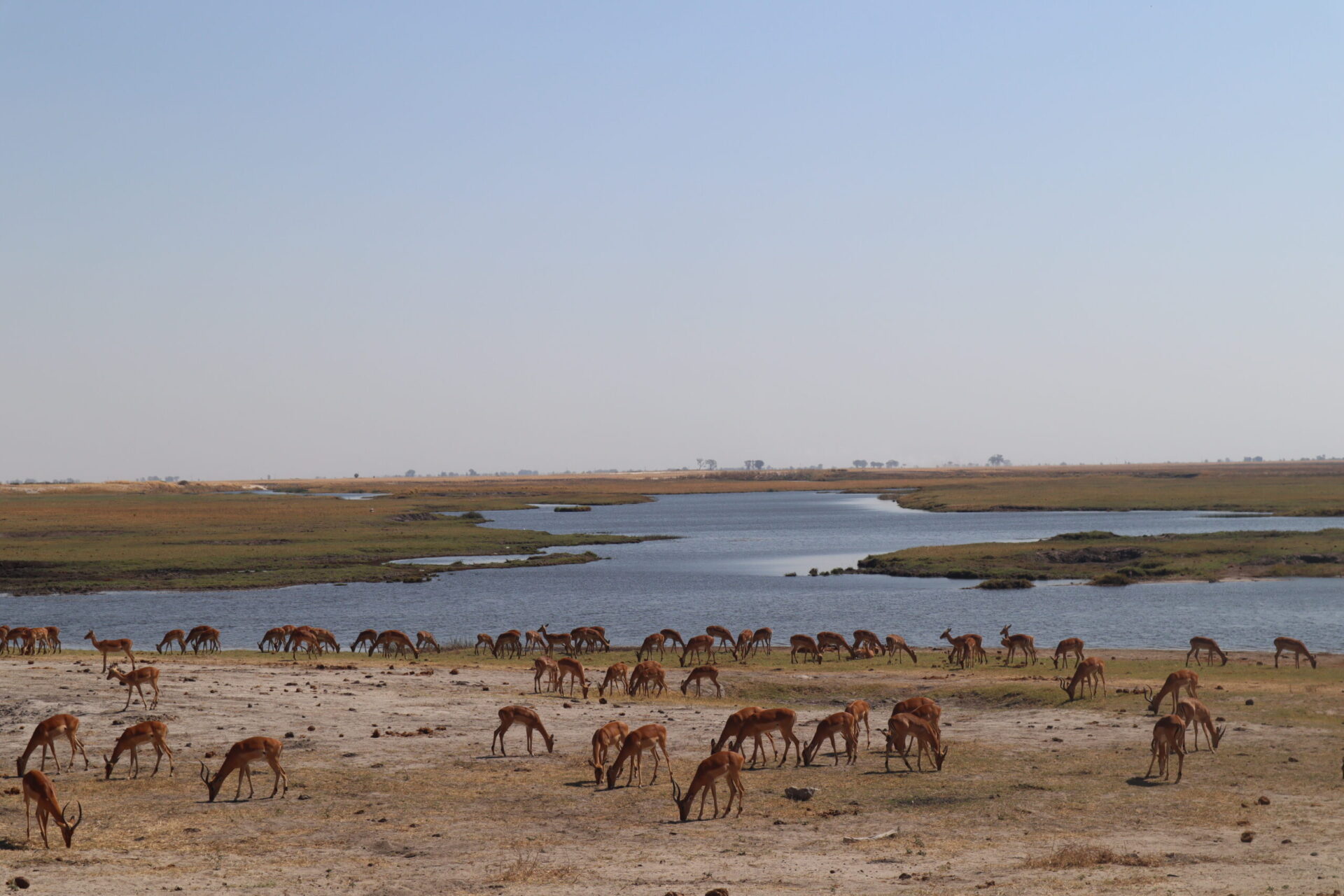




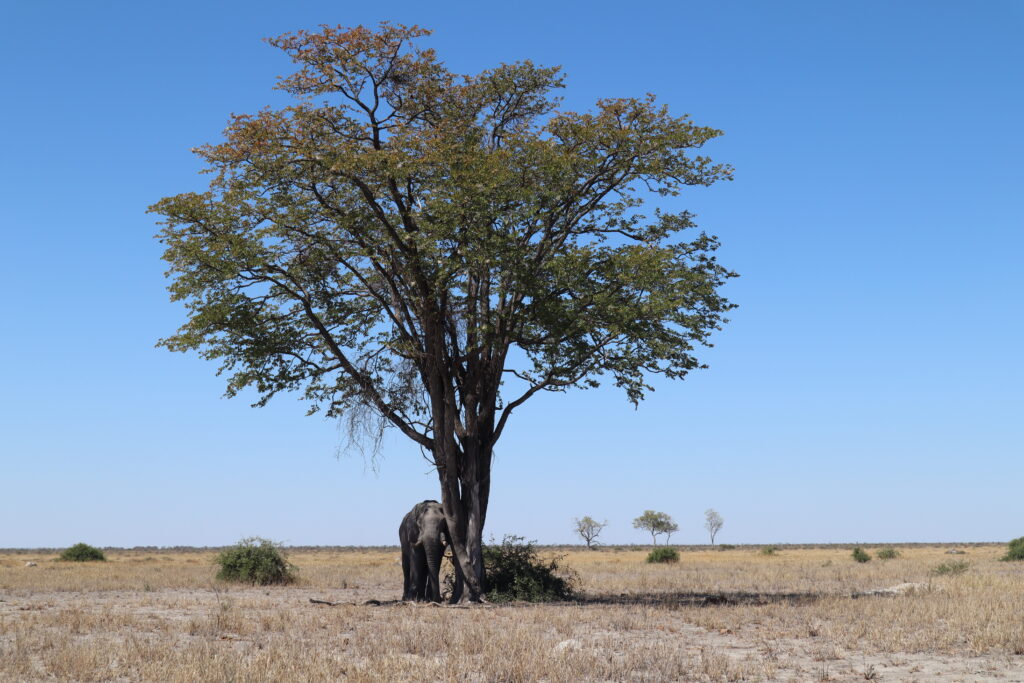
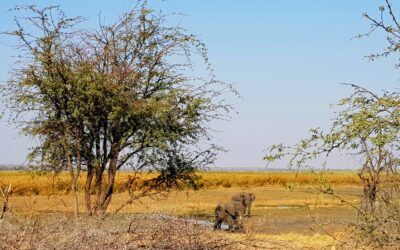
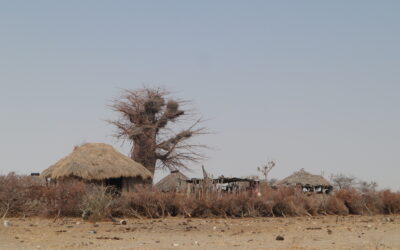

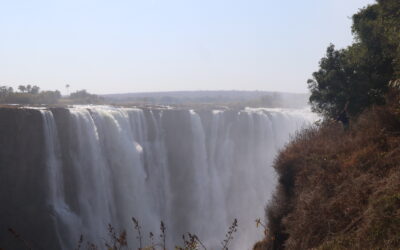

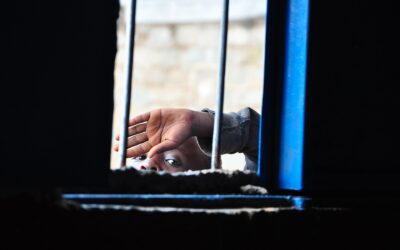


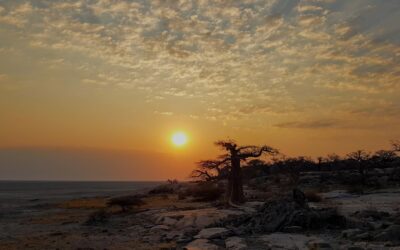

0 Comments